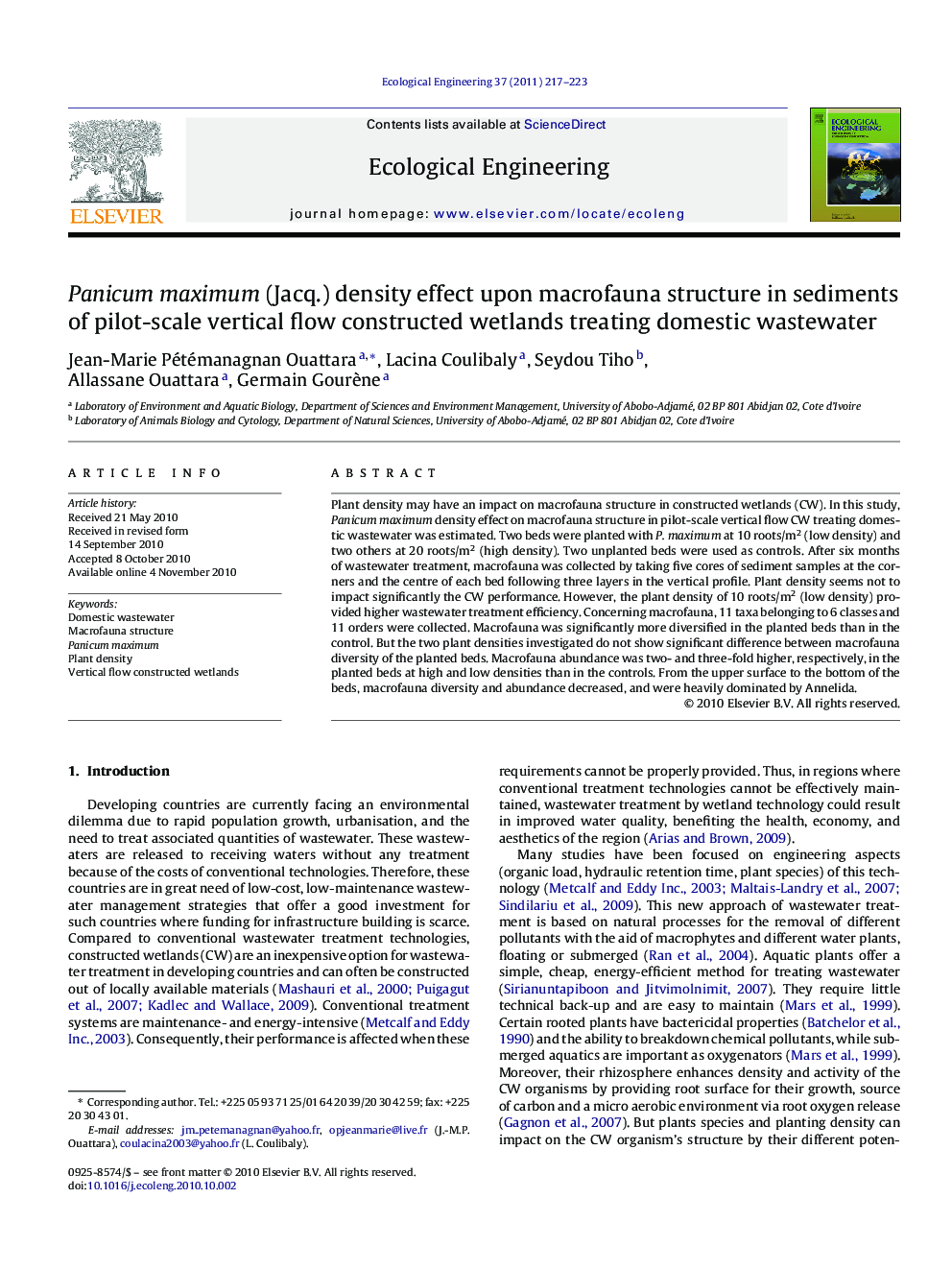| Article ID | Journal | Published Year | Pages | File Type |
|---|---|---|---|---|
| 6302834 | Ecological Engineering | 2011 | 7 Pages |
Abstract
Plant density may have an impact on macrofauna structure in constructed wetlands (CW). In this study, Panicum maximum density effect on macrofauna structure in pilot-scale vertical flow CW treating domestic wastewater was estimated. Two beds were planted with P. maximum at 10 roots/m2 (low density) and two others at 20 roots/m2 (high density). Two unplanted beds were used as controls. After six months of wastewater treatment, macrofauna was collected by taking five cores of sediment samples at the corners and the centre of each bed following three layers in the vertical profile. Plant density seems not to impact significantly the CW performance. However, the plant density of 10 roots/m2 (low density) provided higher wastewater treatment efficiency. Concerning macrofauna, 11 taxa belonging to 6 classes and 11 orders were collected. Macrofauna was significantly more diversified in the planted beds than in the control. But the two plant densities investigated do not show significant difference between macrofauna diversity of the planted beds. Macrofauna abundance was two- and three-fold higher, respectively, in the planted beds at high and low densities than in the controls. From the upper surface to the bottom of the beds, macrofauna diversity and abundance decreased, and were heavily dominated by Annelida.
Related Topics
Life Sciences
Agricultural and Biological Sciences
Ecology, Evolution, Behavior and Systematics
Authors
Jean-Marie Pétémanagnan Ouattara, Lacina Coulibaly, Seydou Tiho, Allassane Ouattara, Germain Gourène,
